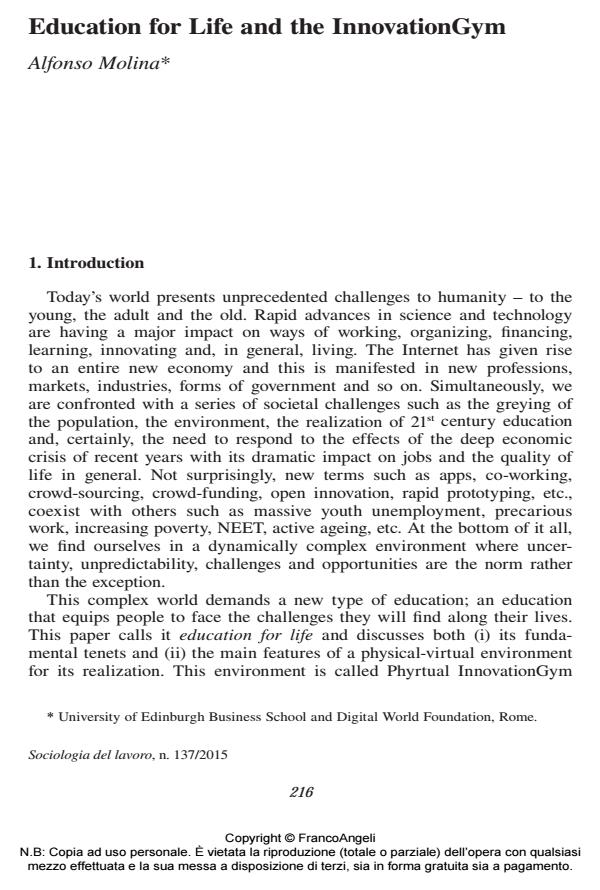Education for Life and the InnovationGym
Journal title SOCIOLOGIA DEL LAVORO
Author/s Alfonso Molina
Publishing Year 2015 Issue 2015/137
Language English Pages 15 P. 216-230 File size 176 KB
DOI 10.3280/SL2015-137013
DOI is like a bar code for intellectual property: to have more infomation
click here
Below, you can see the article first page
If you want to buy this article in PDF format, you can do it, following the instructions to buy download credits

FrancoAngeli is member of Publishers International Linking Association, Inc (PILA), a not-for-profit association which run the CrossRef service enabling links to and from online scholarly content.
The 21st century is presenting unprecedented challenges to human development. Rapid advances in science and technology are having a widespread impact in all walks of life from jobs, industry, finance to education, health and leisure. Add to this, the tendency towards systemic crises affecting the financial and economic systems and we find ourselves in a dynamically complex environment where uncertainty, unpredictability, challenges and opportunities are the norm rather than the exception. This complex world demands a new type of education; an education that equips people to face the challenges they will find along their lives. This paper calls it education for life and discusses both (i) its fundamental tenets and (ii) the main features of a physical-virtual environment for its realization. This environment is called Phyrtual InnovationGym and is part of the strategic work of the Fondazione Mondo Digitale, Rome, within the Italian school system. The InnovationGym represents both: (1) an environment to realize the concept of education for life, and (2) a mechanism to stimulate a gradual systemic innovation across the Italian school system.
Keywords: Human development, education for life, physical-virtual learning setting, Phyrtual InnovationGym
Alfonso Molina, Education for Life and the InnovationGym in "SOCIOLOGIA DEL LAVORO " 137/2015, pp 216-230, DOI: 10.3280/SL2015-137013